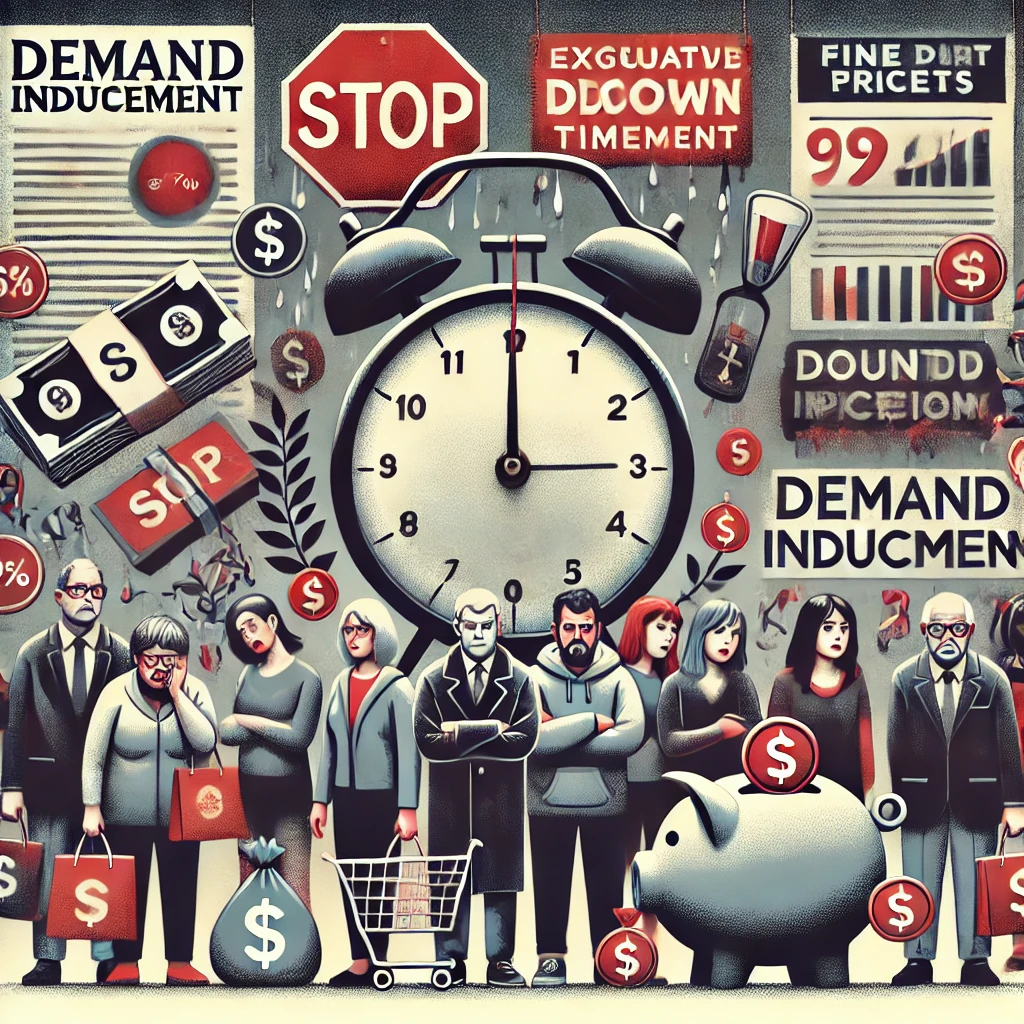In today’s consumer-driven marketplace, businesses often employ a range of strategies to generate demand for their products and services. Among these strategies is demand inducement, a concept that involves tactics to stimulate consumer interest and drive purchases. While it can be an effective tool for boosting sales, demand inducement can also pose significant ethical challenges, especially when it leads to manipulation or misrepresentation. This article explores the mechanisms of demand inducement, its potential impacts on consumers, and the role of consumer protection laws in ensuring that these practices remain fair and transparent.
What is Demand Inducement?
Demand inducement refers to the various methods businesses use to encourage consumers to purchase a product or service that they may not have otherwise considered. These tactics can range from traditional advertising to more sophisticated strategies, including psychological pricing, scarcity marketing, product bundling, and upselling. In some cases, demand inducement is a straightforward effort to inform customers about a new product; in others, it may involve subtle or overt forms of manipulation designed to create an artificial sense of need or urgency.
While demand inducement is not inherently unethical, issues arise when these techniques exploit consumer vulnerabilities or obscure critical information. For example, a company might use misleading advertising to convince consumers that a product is more effective than it is, or it may create a false sense of scarcity to pressure consumers into making hasty decisions. These practices not only compromise consumer autonomy but can also lead to financial strain and dissatisfaction.
Types of Demand Inducement Tactics and Consumer Risks
- Scarcity Marketing: This tactic leverages the concept of limited availability to make products more desirable. By suggesting that a product is rare or that stock is low, companies create a sense of urgency, pressuring consumers into immediate purchases. However, when scarcity claims are exaggerated or fabricated, they can mislead consumers and result in impulsive buying.
- Psychological Pricing: Using pricing strategies to influence consumer perception, such as setting prices at $9.99 instead of $10.00, can encourage purchases by making products appear cheaper than they are. Additionally, companies may use high reference prices (e.g., “original price” or “suggested retail price”) to make discounts seem more attractive, even if these reference prices are inflated.
- Add-Ons and Bundling: Offering product add-ons and bundles is a common way to increase the perceived value of a purchase. However, this can lead to confusion and misinterpretation, especially if essential details are not disclosed, like the actual cost savings (or lack thereof) of the bundle.
- Health and Wellness Claims: In sectors such as food, beauty, and health, companies often make claims about the benefits of their products. These claims, however, are not always substantiated, leading consumers to spend money on products that may not deliver the promised results.
- Subscription Models and Auto-Renewals: Subscription services often entice consumers with low introductory rates or free trials but then automatically renew at a higher rate. While these practices can be legitimate, they may also trap consumers in costly contracts if companies do not make the terms and conditions clear upfront.
Demand Inducement and Consumer Protection Laws
To address the potential risks associated with demand inducement, governments and regulatory agencies have implemented a range of consumer protection laws. These laws seek to prevent deceptive practices, ensure transparency, and protect consumers from unfair sales tactics. Key consumer protection mechanisms include:
- Truth-in-Advertising Laws: Enforced by agencies like the Federal Trade Commission (FTC) in the United States, truth-in-advertising laws require businesses to provide accurate and non-deceptive information in their marketing efforts. This prevents companies from making false claims about product benefits, pricing, and availability.
- Transparency in Pricing: Many jurisdictions have regulations that require businesses to disclose all relevant fees and costs associated with a purchase. This ensures that consumers are fully informed of the financial commitments they are making and prevents hidden fees from catching them off-guard.
- Right to Cancel: In some regions, consumer protection laws grant consumers the right to cancel certain types of transactions within a specified period, especially in cases of high-pressure sales environments or recurring subscription services. This provides consumers with a safeguard against impulsive decisions.
- Product Labeling Requirements: In industries such as food and pharmaceuticals, labeling laws require companies to provide clear information about ingredients, health risks, and side effects. These regulations help consumers make informed choices and avoid products that may not align with their health needs or preferences.
Ethical Demand Inducement: Balancing Profit and Consumer Welfare
Businesses seeking to engage in ethical demand inducement should prioritize transparency and fairness in their marketing practices. By clearly communicating product features, pricing, and potential risks, companies can build trust with consumers and foster long-term relationships. Here are some best practices for ethical demand inducement:
- Honesty in Advertising: Companies should avoid exaggerating product benefits and ensure that any claims made in advertising are substantiated.
- Clear Pricing Information: Businesses should strive to provide complete information about pricing, including all associated fees, to prevent surprises at checkout.
- Respect for Consumer Autonomy: Instead of pressuring consumers into quick decisions, companies should empower them with information, allowing for informed choices.
The Future of Demand Inducement and Consumer Protection
As technology advances, demand inducement tactics will likely become more sophisticated, incorporating personalized marketing, data-driven insights, and even artificial intelligence. While these advancements offer significant benefits, they also underscore the need for strong consumer protection measures. Regulators will need to continuously update and enforce laws to address new forms of manipulation and ensure that consumers are protected in an increasingly complex marketplace.
Ultimately, a fair and transparent approach to demand inducement can benefit both consumers and businesses. By fostering trust and ensuring that consumer welfare remains a priority, companies can build lasting relationships with their customers and contribute to a more ethical and sustainable marketplace.


Leave a Reply